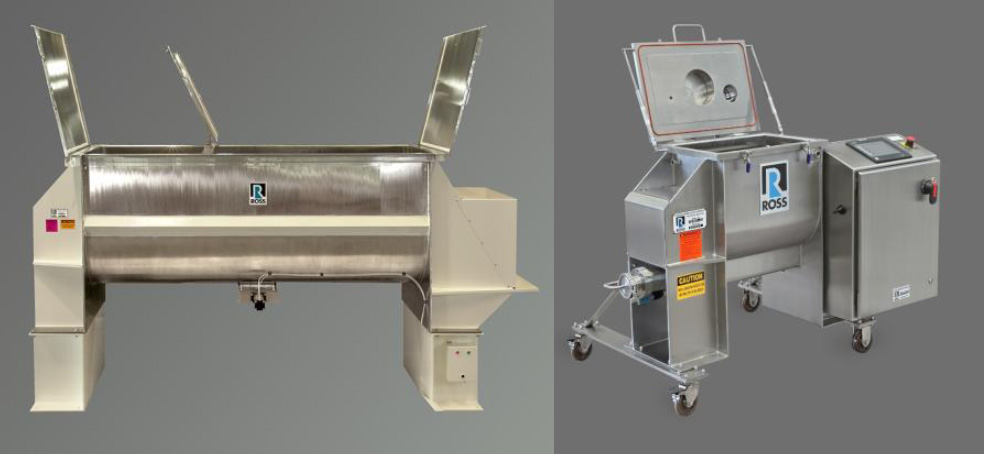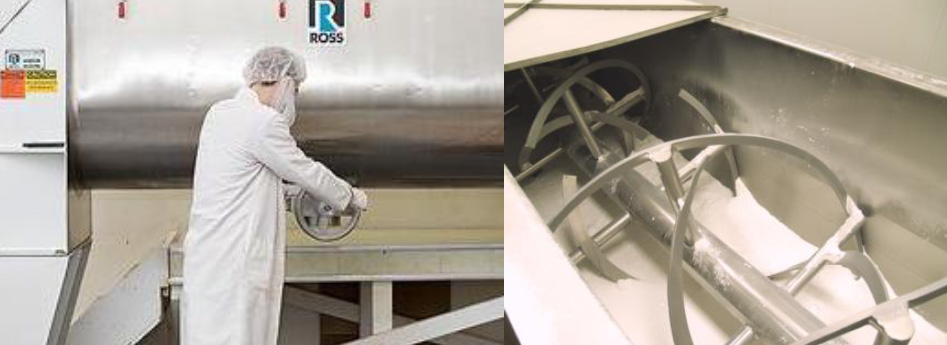Tech Report
What to look for in a sanitary ribbon blender

Technology Brief
Subtle differences in ribbon blender design and construction can significantly impact mixing performance and reliability. Especially in sanitary applications, certain blender features must not be overlooked in the specification process.
Ribbon blenders in the process industries
The batch ribbon blender is a standard workhorse mainly used for solid-solid mixing. Its simplicity, functionality and affordability contribute to its widespread use in many industries including the manufacture of food, nutraceutical and pharmaceutical products.
When comparing ribbon blender offerings, knowing what features matter the most is one of the very first steps a process engineer can take to ensure future batch-to-batch consistency, equipment reliability, flexibility, ease of cleaning, low maintenance and operator safety.
Specify a ribbon blender for your sanitary application
Below are some considerations for specifying a ribbon blender that will best suit your particular process.
- Agitator design and construction. Agitator design varies from one manufacturer to another but essentially consists of inner and outer helical ribbons. This configuration produces both radial and two-way axial flow of materials. High quality ribbon blenders are fabricated to achieve tightly controlled clearances in the range of 1/8" to 3/16" between the U-shaped trough and the agitator tips. Utilizing a flush discharge valve and, if necessary, installing scrapers on the ribbon agitator further minimizes potential dead spots.
- Product-wetted surfaces. The most widely accepted material of construction is stainless steel 316/316L, though some applications are compatible with the less expensive stainless steel 304 as well. A polish of 150-grit or higher on the interior surfaces helps prevents material buildup and enables easy cleaning.
- Proper sizing. The desired batch volume (not mass) determines the size of the ribbon blender but bulk density determines motor horsepower and if a standard or heavy-duty model is required. Make sure to provide your blender supplier with accurate product density data for all formulations that you are looking to process in the same blender.
- Drive design and controls. Ribbon blenders directly driven by a gear motor (one piece motor reducer) are generally recommended over belt- or chain-driven designs. Gear motors work extremely well with electronic inverters and this combination provides important control features such as variable speed, overload protection and adjustable starting torques.
- Size reduction. The blending action of the ribbon agitator inherently generates pinch points near the vessel walls which are often sufficient for breaking up lumps in the batch. For tougher agglomerates, high speed choppers may be installed through the cover or sidewall of the ribbon blender. On the other hand, sensitive and friable batches benefit from a gentler blending mechanism as can be provided by a paddle agitator. Testing is recommended to confirm the appropriate level of shear for a particular formulation.
- Operator safety. Well-designed ribbon blenders incorporate safety shaft guards so that there are no external moving parts. Safety limit switches prevent the agitator from running when the cover or safety grating is not in place. For enhanced worker safety and ease of operation, consider upgrading to a pneumatically-actuated dust-tight cover and discharge valve.
Installation Snapshots

Shown is a Ross Ribbon Blender used for batching vitamin supplements and nutraceutical blends. In operation, ingredients are loaded into the blender, typically filling 40-100% of the rated capacity. This is up to the level of the outer ribbon`s tip, leaving enough head space for the material to be vigorously agitated and mixed. Above photos show a batch during the discharge cycle.